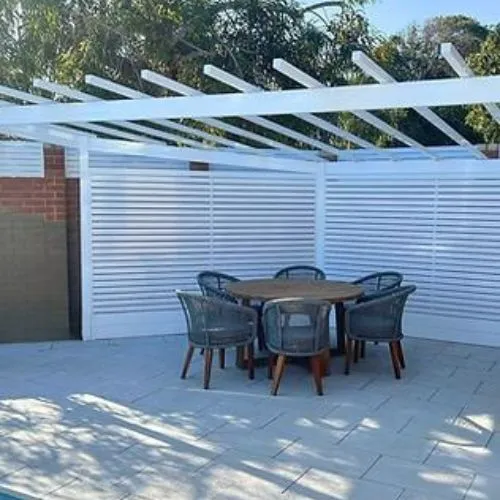When installing a Rockingham Fence, it’s crucial to comply with local regulations governed by the City of Rockingham Council. These rules help ensure that fencing installations meet safety, privacy, and aesthetic standards within the suburb. Here is a Q&A guide on the essential aspects, including permits, height restrictions, and boundary laws.
Do I Need a Permit for Fencing in Rockingham?
For most residential fencing in Rockingham, you won’t need a permit as long as the design complies with the local regulations set by the City of Rockingham Council. However, there are cases where council approval is required:
- Pool fencing: Pool fences must meet Western Australian safety regulations, and you may need approval to ensure compliance.
- Heritage-listed properties: If your property is heritage-listed or in a special zoning area, you will need to apply for permission.
- Height-exceeding fences: If your proposed fence exceeds the allowable height limits (explained below), you will need council approval.
It’s always a good idea to confirm with the City of Rockingham Council to ensure you’re following the proper procedures.
What Are the Height Restrictions for Fencing in Rockingham?
To maintain visual appeal and safety, the suburb of Rockingham follows height restrictions for fencing. These limits include:
- Front fences: Solid front fences should not exceed 1.2 metres. If you prefer an open-style fence (e.g., slatted or picket), you can build up to 1.8 metres.
- Side and rear fences: Fences along the side and rear boundaries are usually allowed to be up to 1.8 metres in height.
- Corner properties: If your property is located on a corner, fences near intersections or driveways must adhere to additional visibility requirements, which may involve lower height limits to ensure safe sightlines for drivers and pedestrians.
If your fencing project exceeds these heights, you’ll need to seek approval from the City of Rockingham Council.

What Are the Boundary Fence Laws in Rockingham?
Boundary fencing in Rockingham follows the Dividing Fences Act 1961, which outlines responsibilities for fencing shared between neighbouring properties. Key considerations include:
- Cost-sharing: The cost of constructing or maintaining a boundary fence is typically shared equally between neighbours. Both parties should agree on the design, material, and cost before proceeding.
- Location: The fence should be built on the boundary line between properties. If it is constructed on one side of the boundary, the owner on that side might be solely responsible for its costs.
- Dispute resolution: If neighbours cannot agree on aspects such as height, materials, or cost-sharing, the Dividing Fences Act provides a legal pathway for resolving disputes, either through mediation or court if necessary.
What Are the Special Requirements for Corner Properties?
Corner properties in Rockingham have additional fencing regulations due to visibility and safety concerns. These requirements ensure that fences near street corners or driveways don’t obstruct views for drivers or pedestrians:
- Lower fences near intersections: Fences at the corner of a property, especially near roads or driveways, may need to be lower than 1.2 metres to maintain visibility for traffic and pedestrians.
- Visually permeable fences: Open-style fences that allow for visibility are often encouraged for corner properties to enhance safety.
Always consult the City of Rockingham Council to ensure your fencing project complies with these visibility guidelines.
How Can I Resolve a Fencing Dispute with My Neighbour?
Fencing disputes, especially over boundary fences, are common and can be resolved under the Dividing Fences Act 1961. Here’s how to handle such disputes:
- Communicate: Discuss your fencing plans with your neighbour. Most issues can be resolved through open communication.
- Mediation: If you cannot reach an agreement, seek professional mediation services to help settle the dispute.
- Legal resolution: If mediation fails, you can escalate the matter to the Magistrates Court under the Dividing Fences Act, though this should be a last resort due to the time and expense involved.
Conclusion
Navigating the local fencing regulations in Rockingham, a suburb of Perth, involves understanding height restrictions, boundary fence laws, and whether a permit is required. Adhering to these rules, set by the City of Rockingham Council, will help ensure your fencing project complies with all local standards. Always consult with your neighbour and check with the council before starting any work to avoid potential disputes or fines.

